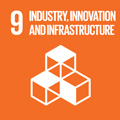- Docente: Camilla Luni
- Credits: 6
- SSD: ING-IND/24
- Language: Italian
- Moduli: Cristiana Boi (Modulo 1) Camilla Luni (Modulo 2)
- Teaching Mode: In-person learning (entirely or partially) (Modulo 1); In-person learning (entirely or partially) (Modulo 2)
- Campus: Bologna
- Corso: Second cycle degree programme (LM) in Molecular and industrial biotechnology (cod. 9213)
-
from Oct 08, 2024 to Dec 12, 2024
-
from Oct 23, 2024 to Dec 17, 2024
Learning outcomes
Basic knowledge and ability to model physico–chemical phenomena involved in the biochemical processes at industrial level.
At the end of the course, the student will be able to (i) understand the schematic of a process for the production of a biotechnological product; (ii) apply mass and energy balances to multi-component systems in a single operational unit and in complex systems; (iii) understand transport phenomena occurring within the process.
Course contents
Module 1 (20h)
- Peculiar features of biochemical processes. Batch, continuous and fed-batch operations. Steady and non-steady state.
- Notions of algebra and calculus.
- Fluid dynamics, laminar and turbulent flow, Newton’s law and viscosity, non-newtonian fluids. Bernoulli’s equation, head loss, friction factor.
Module 2 (32h)
- Different methods to describe the composition of a mixture.
- Mass balance for a non-reacting system in steady and non-steady state.
- Phase equilibrium, mass balance for a single equilibrium stage and for counter-current cascade.
- Mass balance for reacting systems, reaction rate, examples (first order, Michaelis–Menten, exponential growth, …).
- Continuous flow reactors: the ideal stirred tank reactor and the ideal plug flow reactor, tanks in series, mass balance and analysis of isothermal reactors.
- Overall mass transfer coefficients.
- Mass transfer coefficients, resistance in series concept, reactions between a fluid and a solid, controlling step, aeration of bioreactors.
- Diffusion: Fick’s law, diffusion in gas, liquid and solids. Steady state and transient diffusion in plane, cylinder, spheres, some applications: barrier polymers, membranes.
- Mass transfer in laminar and turbulent flow: film theory, dimensional analysis, empirical correlations.
- Heat transfer mechanisms, steady state conduction and convection. Transient heat transfer, analogies among mass and heat transfer.
- Energy balance. Some remarks on the first principle of thermodynamics. Energy balance for open systems, applications.
Readings/Bibliography
Slides and notes from classes.
Suggested readings:
- Gostoli C., Trasporto di materia con elementi di reattoristica chimica e biochimca, Pitagora editrice, Bologna, 2011.
- Cussler E.L., Diffusion, Mass Transfer in Fluid System, Cambridge University Press, 1984.
- R.G. Harrison, P. Todd, S.R. Rudge, D. P. Petrides, Bioseparations Science and Engineering, Oxford Univ. Press, 2003.
- Y.A. Çengel, Termodinamica e trasmissione del calore, McGraw-Hill, 3a Ed., Milano (2009).
Teaching methods
Class lectures, homework problems, discussion of problem solutions.
Assessment methods
The exam is a written test including two parts:
- one open question covering the topics of Module 2. The answer should be approximately half-page long. This part lasts 15 minutes.
- one exercise on fluid mechanics and one exercise on heat or mass transport. This part lasts 1.5 hour.
Teaching tools
Presentation slides that will be made available to the students.
Office hours
See the website of Camilla Luni
See the website of Cristiana Boi
SDGs

This teaching activity contributes to the achievement of the Sustainable Development Goals of the UN 2030 Agenda.
